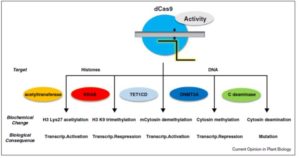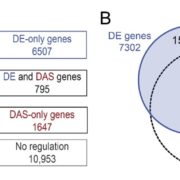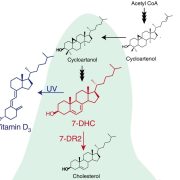Two Reviews: CRISPR/Cas for genome engineering in plants, and genome editing in cereal crops ($)
 The gene-editing technology CRISPR/Cas, which introduces double-strand breaks that are repaired by non-homologous end joining (NHEJ), is best known for the promise it holds in modifying an organism’s DNA without the introduction of exogenous genes. However, as Puchta describes (Curr. Opin. Plant Biol. 10.1016/j.pbi.2016.11.011), there are also many other ways that CRISPR/Cas can alter gene function and expression. In this review, he summarizes some of these other possibilities, which include: site-specific DNA integration of transgenes, single-base substitutions, targeting of transcriptional activators or repressors to regulatory sites, targeting histone-modifying enzymes, and in vivo genomic labeling. Other new approaches on the horizon include the use of an enzyme that produces double-strand breaks with a four-base overhang (leading to greater efficiency of repair than provided by Cas) and the application of CRISPR to RNA molecules. In a related review, Zhu et al. (Trends Plant Sci. 10.1016/j.tplants.2016.08.009) provide an overview of the application of CRISPR/Cas and other genome editing tools in crop plants, including a discussion of the frequency of off-target mutations.
The gene-editing technology CRISPR/Cas, which introduces double-strand breaks that are repaired by non-homologous end joining (NHEJ), is best known for the promise it holds in modifying an organism’s DNA without the introduction of exogenous genes. However, as Puchta describes (Curr. Opin. Plant Biol. 10.1016/j.pbi.2016.11.011), there are also many other ways that CRISPR/Cas can alter gene function and expression. In this review, he summarizes some of these other possibilities, which include: site-specific DNA integration of transgenes, single-base substitutions, targeting of transcriptional activators or repressors to regulatory sites, targeting histone-modifying enzymes, and in vivo genomic labeling. Other new approaches on the horizon include the use of an enzyme that produces double-strand breaks with a four-base overhang (leading to greater efficiency of repair than provided by Cas) and the application of CRISPR to RNA molecules. In a related review, Zhu et al. (Trends Plant Sci. 10.1016/j.tplants.2016.08.009) provide an overview of the application of CRISPR/Cas and other genome editing tools in crop plants, including a discussion of the frequency of off-target mutations.









Leave a Reply
Want to join the discussion?Feel free to contribute!